Winter and Spring Care
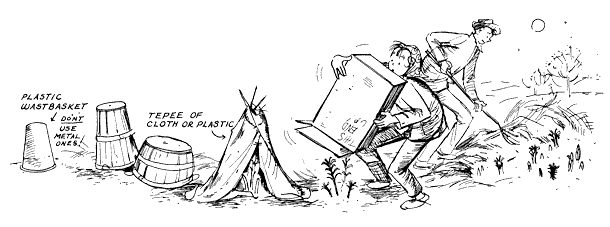
Lilies planted in the fall should be mulched with a generous layer of straw, pine needles, salt hay, leaves, etc. to protect against heaving which might tear the new roots. A thick winter much will also inhibit the eager sprouts from poking up too early in the spring to be nipped by frost. But please do not spread the mulch until the hungry mice have found winter homes elsewhere, as mice love to nibble on tender lily bulbs.
Leave the mulch on the lily beds as long as possible, but peek under now and then to see what’s poking through. Before the shoots get too long, the mulch must be raked off. Be careful, as the new shoots are very brittle. If a shoot is broken off, it means no bloom for the season for that lily.
Keep the mulch stacked close by. On frosty nights it is a good idea to cover the shoots; newspaper, cardboard boxes or baskets may be used for this purpose too.
Fertilizing
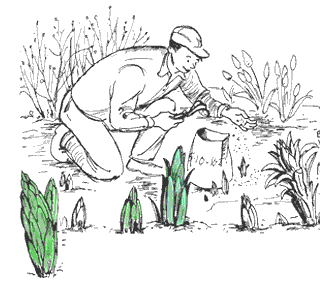 A big strapping plant like a lily, with an inflorescence of sometimes dozens of big flouncy blooms needs plenty of nourishment. Nitrogen is needed when the green leaves are growing rapidly, and phosphorus and potassium later for bloom and bulb production. A good all-around recipe would be to scratch in a generous helping of a complete formulation such as 10-10-10 in early spring after the shoots have emerged, with smaller supplemental feedings throughout the season. Keep fertilizer from directly contacting the bulbs, and always water the fertilizer in thoroughly.
A big strapping plant like a lily, with an inflorescence of sometimes dozens of big flouncy blooms needs plenty of nourishment. Nitrogen is needed when the green leaves are growing rapidly, and phosphorus and potassium later for bloom and bulb production. A good all-around recipe would be to scratch in a generous helping of a complete formulation such as 10-10-10 in early spring after the shoots have emerged, with smaller supplemental feedings throughout the season. Keep fertilizer from directly contacting the bulbs, and always water the fertilizer in thoroughly.
Staking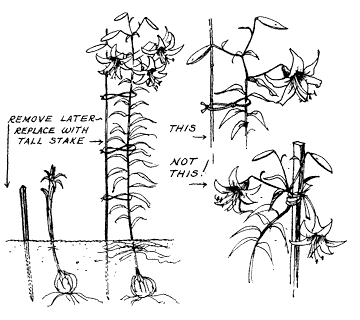
Lilies with huge heads of blooms sometimes need staking. Experts tell us to place stakes at the time of planting to avoid spearing the bulb . . . but tall stakes are so unattractive! If a good rugged little stake is used as a marker when planting, you cold just tug that out when the lily stalk is about budded, and substitute a taller one for support. Tie the stems naturally and gracefully . . . don’t strangle them!
Watering
Lilies need constant moisture, and if you plan to raise prize winning lilies, this one factor may mean the difference between blue ribbon specimens and . . just ordinary beautiful lilies. There is a best way to provide the water, of course, and that is by soaking. Let the hose run (gently) near the clumps until the ground is moistened to a depth of 6 inches. A soil soaker will service several clumps at one time. Overhead sprinkling is less desirable as it might encourage disease.
Mulches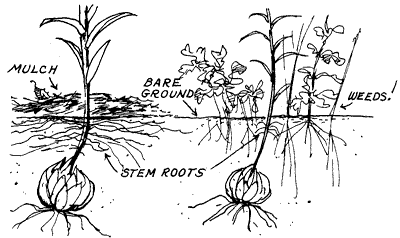
One way of conserving moisture in between waterings is by mulching. Mulching is wonderful for lilies! It keeps the soil cool and loose . . .lilies like that! Mulch discourages weeds . . . (You will like that!) It provides a fluffy, nutritious medium for the hungry stem roots to revel in, and it keeps the soil from baking and packing and catches and holds every little summer shower so not a drop of rain is wasted.
Disease Prevention
Most of the few troubles that beset lilies may be prevented in the very beginning by proper planting. Perfect drainage will forestall bulb rot. Good circulation of air will help eliminate fungus diseases and even infestations for aphids. Proper placing may prevent frsot damage. So choose your planting spots well!
Fall Cleanup
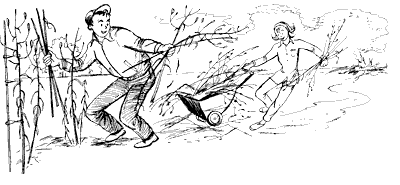 When the lily stalks have matured and turned yellow . . . then you can cut them back. If completely dry, you may pull them out easily. Careful though . . . don’t pull up the bulb!
When the lily stalks have matured and turned yellow . . . then you can cut them back. If completely dry, you may pull them out easily. Careful though . . . don’t pull up the bulb!
Old lily stems should always be removed in the fall . . . and any other odds and ends of debris that could harbor diseases. It is best not to add this material to your compost pile.
Transplanting
Lilies will usually thrive for years in the same spot, especially if well cared for. However, when many spindly short stems indicate crowding, the clumps should be lifted, carefully pulled apart, and divisions planted elsewhere. If you must replant in the same spot, replace or reinforce the soil first with additional fertilizer and organic material.